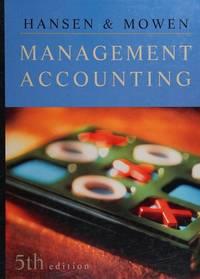Crunchy Chips was established in 1938 by Paul Golding and his wife, Nancy (Nancy sold her piano
Question:
Crunchy Chips was established in 1938 by Paul Golding and his wife, Nancy (Nancy sold her piano to help raise capital to start the business). Paul assumed responsibility for buying potatoes and selling chips to local grocers; Nancy assumed responsibility for production. Since Nancy was already known for her delicious, thin potato chips, the business prospered. Over the past sixty years, the company has established ‘distribution channels in 11 western states, with production facilities in Utah, New Mexico, and Colorado. In 1980, Paul Golding died, and his son, Edward, took control of the business. By 2001, the company was facing stiff competition from national snack-food companies.
Edward was advised that the company’s plants needed to gain better control over production costs. To assist in achieving this objective, he hired a consultant to install a standard costing system. To help the consultant in establishing the necessary standards, Edward sent her the following memo:
To: Diana Craig, CMA From: Edward Golding, President, Crunchy Chips Subject: Description and Data Relating to the Production of Our Plain Potato Chips Date: September 28, 2001 The manufacturing process for potato chips begins when the potatoes are placed into a large vat in which they are automatically washed. After washing, the potatoes flow directly to an automatic peeler. The peeled potatoes then pass by inspectors who manually cut out deep eyes or other blemishes. After inspection, the potatoes are automatically sliced and dropped into the cooking oil. The frying process is closely monitored by an employee. After they are cooked, the chips pass under a salting device and then pass by more inspectors, who sort out the unacceptable finished chips (those that are discolored or too small). The chips then continue on the conveyor belt to a bagging machine that bags them in one-pound bags. After bagging, the bags are placed in a box and shipped. The box holds 15 bags.
The raw potato pieces (eyes and blemishes), peelings, and rejected finished chips are sold to animal feed producers for $0.16 per pound. The company uses this revenue to reduce the cost of potatoes; we would like this reflected in the price standard relating to potatoes.
Crunchy Chips purchases high-quality potatoes at a cost of $0.245 per pound. Each potato averages 4.25 ounces. Under efficient operating conditions, it takes four potatoes to produce one 16-ounce bag of plain chips. Although we label bags as con- taining 16 ounces, we actually place 16.3 ounces in each bag. We plan to continue this policy to ensure customer satisfaction. In addition to potatoes, other raw mate- rials are the cooking oil, salt, bags, and boxes. Cooking oil costs $0.04 per ounce, and we use 3.3 ounces of oil per bag of chips. The cost of salt is so small that we add it to overhead. Bags cost $0.11 each and boxes $0.52.
Our plant produces 8.8 million bags of chips per year. A recent engineering study revealed that we would need the following direct labor hours to produce this quan- tity if our plant operates at peak efficiency:
Raw potato inspection 3,200 Finished chip inspection 12,000 Frying monitor 6,300 Boxing 16,600 Machine operators 6,300 I’m not sure that we can achieve the level of efficiency advocated by the study. In my opinion, the plant is operating efficiently for the level of output indicated if the hours allowed are about 10 percent higher.
The hourly labor rates agreed upon with the union are:
Raw potato inspectors $7.60 Finished chip inspectors 9.15 Frying monitor 7.00 Boxing 5.90 Machine operators 6.50 Overhead is applied on the basis of direct labor dollars. We have found that variable overhead averages about 116 percent of our direct labor cost. Our fixed overhead is budgeted at $1,135,216 for the coming year.
Required:
1. Discuss the benefits of a standard costing system for Crunchy Chips.
2. Discuss the president’s concern about using the result of the engineering study to set the labor standards. What standard would you recommend?
3. Develop a standard cost sheet for Crunchy Chips’ plain potato chips.
4. Suppose that the level of production was 8.8 million bags of potato chips for the year as planned. If 9.5 million pounds of potatoes were used, compute the materials usage variance for potatoes.
Step by Step Answer:






